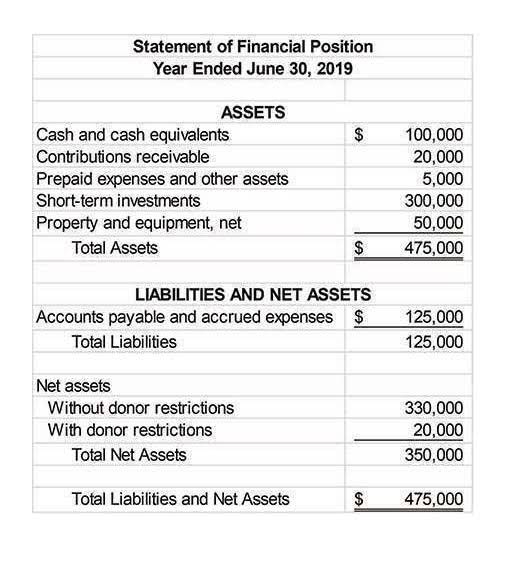
It acts as a buffer against market fluctuations and unexpected expenses. Having a cash reserve can help you avoid selling investments at a loss during a market downturn. Experts recommend having at least six months’ worth of expenses in cash reserves. Enterprise value is calculated by adding a company’s market capitalization, debt, and preferred stock to its cash and cash equivalents. The higher the amount of cash and cash equivalents a company has, the higher its enterprise value and total value. There are several strategies for investing in cash and cash equivalents, each with its own benefits and drawbacks.

Understanding Your Calculation Results
The change in NWC comes out to a positive $15mm YoY, which means the company retains more cash in its operations each year. In our hypothetical scenario, we’re looking at a company with the following balance sheet data (Year 0). But if the change in NWC is negative, the net effect from the two negative signs is that the amount is added to the cash flow amount.

An In-Depth Dive into Understanding, Calculating, and Using the Net Change in Cash
Adjustments account for non-cash transactions and changes in working capital. Depreciation and amortization, for example, reduce taxable income but do not directly impact cash flow. Adjustments also correct discrepancies from changes in accounts receivable, accounts payable, and inventory levels.
How to Analyze Casino Stocks: A Guide for Savvy Investors
- Therefore, the cash ratio should be interpreted with caution and context, and not as a definitive measure of a company’s liquidity or performance.
- But it helps to know how to calculate the net cash flow and related metrics so you can understand how various financial activities are impacting your small business’s cash.
- If a company is generating positive cash flows from its operations, it is more likely to have a positive net increase in cash and cash equivalents.
- They provide a stable source of income and act as a buffer against market fluctuations.
- Depreciation and amortization are common non-cash expenses that reduce net income but do not represent a cash outlay; therefore, they are added back to net income.
- This liquidity cushion is particularly valuable when navigating regulatory requirements.
One of the most important aspects of asset ratio analysis is to evaluate how well a company can pay off its short-term liabilities with its cash and cash equivalents. The cash ratio measures the liquidity of a company by comparing its cash and cash equivalents to its current liabilities. The higher the cash ratio, the more easily the company can meet http://gyeng.kr/in-depth-look-at-homeowners-association-accounting/ its short-term obligations and avoid financial distress. The lower the cash ratio, the more likely the company is to face liquidity problems and default on its debts. To calculate the net cash flow from financing activities, subtract the cash outflows from the cash inflows. A positive net cash flow from financing activities means that the company raised more funds from debt and equity than it paid back, which increases cash.
Introduction to Cash and Cash EquivalentsOriginal Blog
Changes in net working capital can have significant implications for a company’s financial health. For example, if a company experiences a positive change, it may have more funds to invest in growth opportunities, repay debt, or distribute to shareholders. Conversely, a negative change may signal that a company struggles how to calculate net change in cash to meet its short-term obligations. It provides a transparent view of liquidity, enabling companies to assess their financial standing and make informed decisions about expenditures, investments, and strategic planning. Maintaining a positive net cash position allows businesses to seize opportunities, negotiate favorable terms with suppliers, and withstand economic fluctuations.
- Cash is used for immediate transactions, while Cash Equivalents are used for short-term investments.
- Money market funds are considered to be very safe, and they offer higher returns than traditional savings accounts.
- Cash refers to physical currency, such as coins and bills, and deposits in bank accounts that are readily available for use.
- The deposit cannot be used for any other purpose until the loan is paid off or the restriction is lifted.
- To determine the initial amount accurately, consider all relevant factors and previous data that could influence your calculations.
- The net change shows the difference in a company’s cash balance over a given period, typically a full year or part of a year.
An increase in accounts receivable, for instance, ties up cash in credit sales, affecting liquidity. Adhering to accounting standards like IFRS guidelines ensures these adjustments are accurately reflected, offering a clear picture of net cash. Investing activities involve the acquisition and disposal of long-term assets and other investments not classified as cash equivalents. Examples gym bookkeeping include purchasing or selling property, plant, and equipment, acquiring or selling other businesses, and buying or selling marketable securities like stocks and bonds.


We will explain the cash ratio formula, how to calculate it using cash and cash equivalents, and what it reveals about a firm’s financial health. We will also compare the cash ratio with other liquidity ratios and discuss the advantages and disadvantages of using it. The cash flow statement is a crucial financial statement that provides valuable insight into a company’s liquidity position. One of the most important sections of the cash flow statement is the net increase or decrease in cash and cash equivalents. This section indicates the cash inflows and outflows during a specific period and helps investors understand how a company generates and uses its cash.